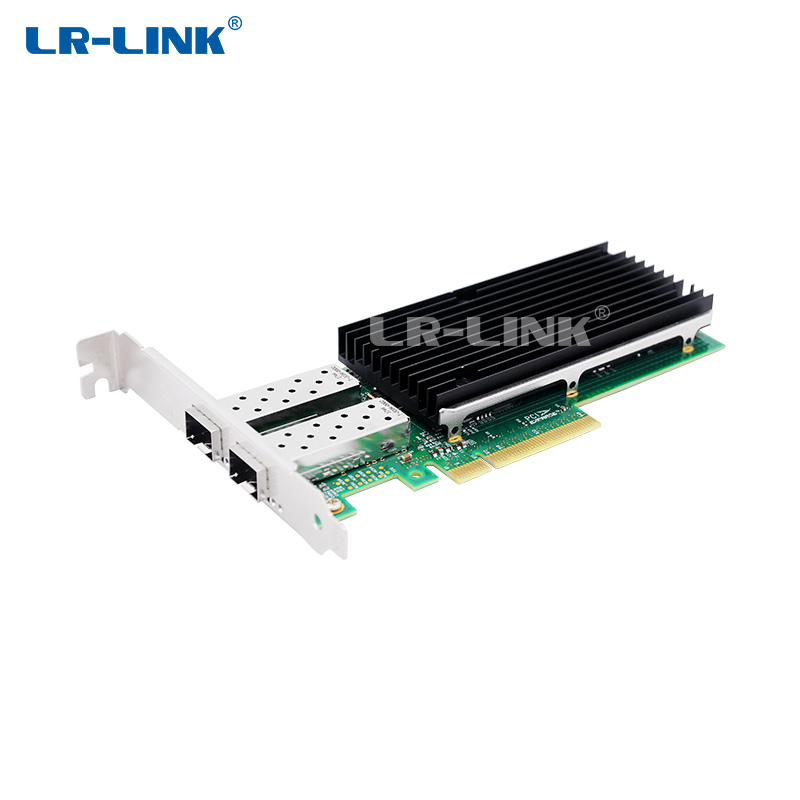Due to the rapid improvement of Ethernet network transmission rate in recent years, with the continuous acceleration of the transmission rate from 100 megabytes, gigabit, gigabit, gigabit, to 25G or even higher, from 100G to 200G, the material requirements for network adapters are getting higher and higher, especially for PCB.
PCB material awareness:
The PCB typically consists of a laminate which may be made of fiber reinforced epoxy (FR4), polyimide or Rogers material or other laminate. The insulating material between the different laminates is referred to as a prepreg.
When used on devices that require extremely high reliability, such as NIC adapters, PCB design engineers face the challenge of using FR4 or more advanced and more expensive materials.
If the NIC adapter requires high speed, high frequency materials, high temperature environment for the PCB, then FR4 may not be the prefect choice. The dielectric constant (Dk) of FR4 is 4.5, the dielectric constant of the more advanced Rogers 4003 series material is 3.55, and the dielectric constant of the brother series Rogers 4350 is 3.66.
The dielectric constant of a stack refers to the ratio of the capacitance or energy between a pair of conductors in the vicinity of the stack to the capacitance or energy between the pair of conductors in the vacuum. At high frequencies, it is best to have a small loss. Therefore, the Roger 4350 with a dielectric constant of 3.66 is more suitable for higher frequency applications than the FR4 with a dielectric constant of 4.5.
In general, the number of PCB layers used in NIC devices ranges from 4 to 12 layers. The principle of the layer construction is that it should be able to provide enough formations and sandwich the signal layer. In this way, the ripple effect in crosstalk can be kept to a minimum and electromagnetic interference (EMI) can be significantly reduced.
Compared to Rogers materials, FR4 has a higher dissipation factor (Df), especially at high frequency signals. For higher performance FR4 stacks, the Df value is around 0.002, which is an order of magnitude better than normal FR4. However, Rogers' stack is only 0.001 or less. Compared to the two, when FR4 materials are used for high frequency applications, there is a significant difference in insertion loss. Insertion loss is defined as the power loss of a signal transmitted from point A to point B when FR4, Rogers, or other materials are used.
The dielectric constant tolerance of laminates made with Rogers UHF materials is typically maintained at ±2%, and some products can even reach ±1%, compared to a dielectric constant tolerance of up to 10% for FR4 laminates. Therefore, comparing the two materials, Rogers' insertion loss is particularly low. The Rogers stack has a transmission loss and insertion loss that is half that of conventional FR4 materials.
In most cases, cost takes the first place. However, Rogers can provide relatively low loss high frequency stack performance at acceptable price points. For commercial applications, Rogers can be combined with epoxy-based FR4 as a hybrid PCB (such as our NV710-2S dual-port 25G Ethernet network card), some of which use Rogers and the other layers use FR4.

Frequency is a primary consideration when choosing a Rogers stack. When the frequency exceeds 500MHz, PCB design engineers tend to choose Rogers materials, especially for RF/microwave circuits. These materials provide more reliable performance when the traces on the PCB are subjected to tight impedance control.
Compared to FR4 materials, Rogers materials also offer lower dielectric losses and a constant dielectric constant over a wide frequency range. In addition, Rogers materials offer the ideal low insertion loss performance for high frequency operation.
The coefficient of thermal expansion (CTE) of Rogers 4000 series materials has excellent dimensional stability. This means that when the PCB is subjected to cold, hot and very hot reflow cycles, the thermal expansion and contraction of the board can be kept at a stable limit at higher frequencies and higher temperature cycles than FR4.
In the case of mixed lamination, it is easy to mix Rogers and high-performance FR4 using common manufacturing process technology, so it is relatively easy to achieve high manufacturing yields. Rogers lamination does not require a special via preparation process.
Ordinary FR4 does not achieve very reliable electrical performance, but high-performance FR4 materials do have good reliability characteristics, such as higher Tg, still relatively low cost, and can be used in a wide range of applications, from simple audio design to simple audio design Complex microwave applications.
Summary:
Based on the above description, the network adapter communication rate will continue to increase at any time, so the high-performance network adapter will have higher PCB requirements:
1. High heat resistance or high Tg temperature
2. Low dielectric constant
3. CAF resistance
4. High dimensional stability or low CTE characteristics
5. No bubbles
6. Resin copper foil